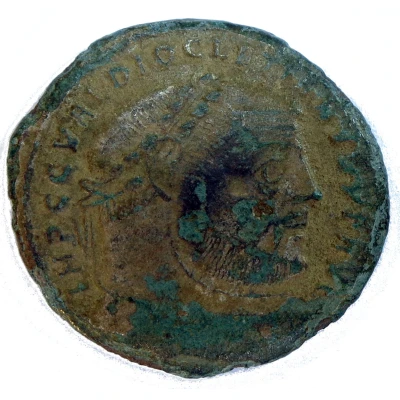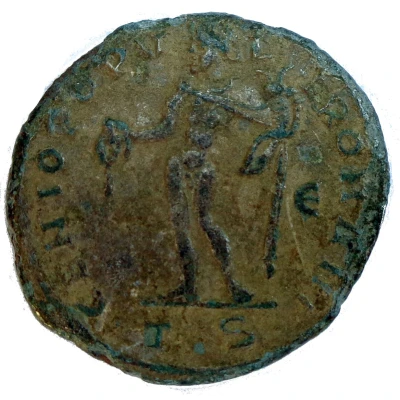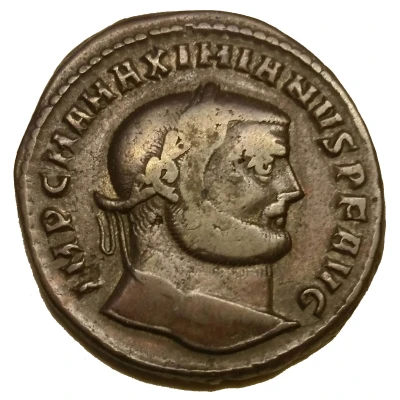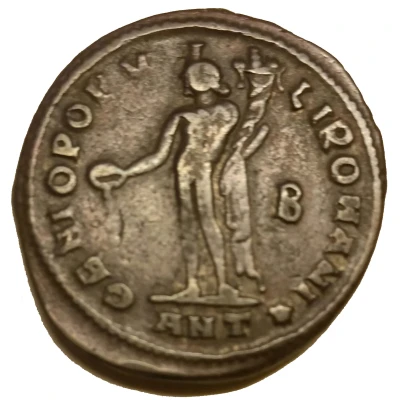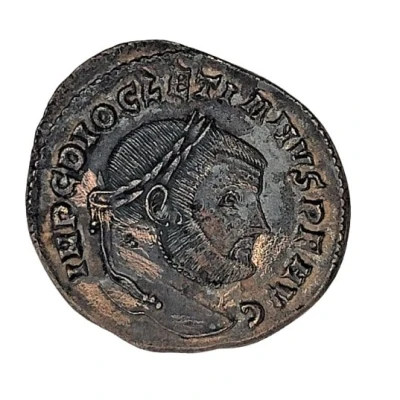
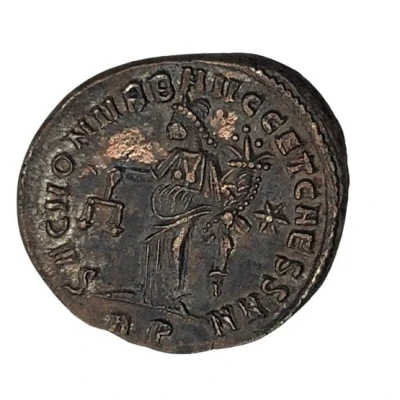

© RonM (CC BY-NC)
Follis - Diocletianus SAC MON VRB AVGG ET CAESS NN; Rome
| Bronze | 11.46 g | 29.00 mm |
| Issuer | Rome › Roman Empire (27 BC - 395 AD) |
|---|---|
| Emperor | Diocletian (Gaius Aurelius Valerius Diocletianus) (284-305) |
| Type | Standard circulation coin |
| Years | 302-303 |
| Value | Nummus / Follis (¼) |
| Currency | Argenteus, Reform of Diocletian (AD 293/301 – 310/324) |
| Composition | Bronze |
| Weight | 11.46 g |
| Diameter | 29.00 mm |
| Thickness | 2.7 mm |
| Shape | Round (irregular) |
| Technique | Hammered |
| Orientation | Coin alignment ↑↓ |
| Demonetized | Yes |
| Updated | 2024-10-05 |
| Numista | N#316395 |
|---|---|
| Rarity index | 97% |
Reverse
Moneta standing left, draped, holding scales in right hand and cornucopiae in left hand; a star in right field.
Script: Latin
Lettering: SAC MON VRB AVGG ET CAESS NN
Translation: Sacra Moneta Urbis Augustorum et Caesarum Nostrorum: The sacred Money of the city of our augusts and caesars.
Interesting fact
One interesting fact about this coin is that it was issued during the reign of Diocletian, who was the last emperor to attempt to reform the Roman Empire's currency system before its eventual decline. The Follis coin was introduced by Diocletian as a replacement for the denarius, which had become devalued due to excessive minting. The Follis was made of bronze and had a higher silver content than the denarius, in an attempt to stabilize the currency. This coin is a rare surviving example of the currency reforms implemented by Diocletian, and its existence provides valuable insight into the economic policies of the late Roman Empire.
